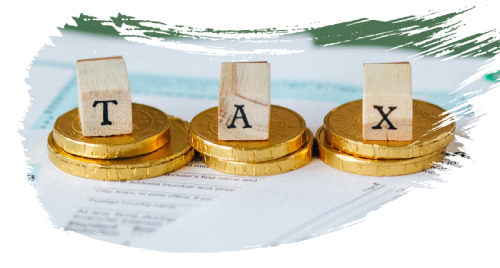TAX UPDATE
Key Tax Changes Effective 1 April 2025
Keep your business compliant by staying up to date with the minimum wage increase, changes to FBT and ESCT thresholds, ACC levy increases and the tax treatment of extra pays.

Minimum Wage Increase
From 1 April 2025, New Zealand’s minimum adult wage will increase, as will the training and starting-out minimum wages. The adult minimum wage will rise from $23.15 to $23.50 per hour, while the starting out and training minimum wage will increase from $18.52 to $18.80 per hour.
Implement Wage Increases Effectively
The minimum wage increase is a timely reminder to review your pay structures, contracts, systems and budgets so that you can effectively manage the financial impact of these changes on your business. We’ve compiled 4 change management steps to help you prepare your business for these changes:
1. Inform Employees & Update Employment Agreements
It is important to inform employees who are on the minimum wage about the upcoming increase in their pay. Update Employment Agreements to reflect the new rates, and send employees a letter or email outlining the new wage rates, ensuring that they clearly understand the changes. Being transparent about new pay rates helps prevent any confusion and ensures employees are fully aware of what changes they can expect in their pay, including the date they can expect to start receiving an increase in their take home pay. It is also a good opportunity to answer any questions they may have.
When updating Employment Agreements for pay increases, it is also a great time to make sure that all other terms of your Employment Agreements are up to date and compliant with current legislation. An Agreement that is up to date and clearly written helps protect both the employer and the employee and reduces the risk of disputes down the line.
2. Review Payroll Systems
Make sure your payroll systems and processes are setup to reflect the new rates. If you outsource your payroll, make sure you reach out to your payroll provider to inform them of what changes should be made for your employees. If you use payroll software, make sure to load these new pay rates in for the relevant employees.
3. Check Internal Pay Structures
With the minimum wage increase, it’s a good time to review your internal pay structure and make sure pay differences are fair across the business. Consider how the wage changes will impact your current pay levels. For example, employees earning just above the minimum wage might expect a pay rise to keep a fair gap between their wages and those on the minimum rate. Having a clear and fair pay system helps avoid resentment and ensures you’re competitive when it comes to attracting and retaining talent.
When reviewing pay, it’s also helpful to compare your rates with industry standards. This can help identify any gaps and stop you from losing staff to competitors offering better pay. Being fair and transparent creates a positive work environment and shows your employees they’re valued.
4. Update Your Budget
Review your budget to make sure it aligns with the new wage increases. Update your forecasts to include the extra costs for both the adult minimum wage rise and the increase for those starting out or in training. This will help ensure your business is financially prepared for the upcoming year.
If you haven’t already created a budget for the new financial year, now is a good time to put one together. Consider how higher wages costs will affect your cash flow, adjust other spending and consider your funding requirements. Take the opportunity to review areas like pricing, operational costs, and efficiency.
Fringe Benefit Tax (FBT) Threshold Changes
Broadly speaking, FBT rates are designed to be consistent with personal income tax rates. As a result of changes to the personal income tax brackets which were effective from 1 July 2024, the Fringe Benefit Tax (FBT) alternate rate thresholds for the 2025-2026 tax year (1 April 2025 to 31 March 2026) will be adjusted.
| New FBT Thresholds | Tax Rate |
| $0 – $13,962 | 11.73% |
| $13,963 – $45,230 | 21.21% |
| $45, 231 – $62,450 | 42.86% |
| $62, 451 – $130,723 | 49.25% |
| $130, 724 upwards | 63.93% |
Employer Superannuation Contribution Tax (ESCT) Changes
Also as a result of changes to personal income tax thresholds that were effective 1 July 2024, Employer Superannuation Contribution Tax (ESCT) changes were required, with a delayed effective date of 1 April 2025 to reduce compliance costs for employers.
| New ESCT Thresholds | Tax Rate |
| $0 – $18,720 | 10.5% |
| $18,721 – $64,200 | 17.5% |
| $64,201 – $93,720 | 30% |
| $93,721 – $216,000 | 33% |
| $216,001 upwards | 39% |
An example of ESCT is an employer’s contribution to an employee’s KiwiSaver scheme, where ESCT is the tax deducted from this contribution. The changes mean that some employees may receive more in their KiwiSaver accounts from 1 April 2025 as a result of a lower ESCT rate being applied.
As an employer, you need to recalculate the ESCT rate at the beginning of the financial year for existing employees. If an employee has worked for you for the entire previous tax year, you will base their ESCT rate on the total salary or wages paid to them during this year, plus the total employer cash contribution you made in the previous year before ESCT was withheld. If an employee worked for you for part of the previous tax year, then the ESCT rate chosen should be based on their estimated salary and wages for this coming income year, plus your estimated total employer cash contribution. Before the new rates come into effect, you should review the ESCT rates for each of your employees based on the revised thresholds, and ensure these are updated in your payroll software.
ACC Levy Changes
The ACC earner levy rate will increase from $1.60 to $1.67 per $100 of liable earnings from 1 April 2025. Additionally, the maximum liable earnings threshold will rise from $142,283 to $152,790 for the 2025 – 2026 tax year, meaning the maximum ACC levy will be $2,551.59.
If you have employees receiving the same gross pay each period, they may notice a slight decrease in their net take home pay as a result of the extra 7 cents being deducted for every $100 earned.

Extra Pays
From 1 April 2025, any extra pay earned as part of normal employment will be taxed according to the tax thresholds introduced on 31 July 2024.
Starting 1 April 2025, when processing extra pay related to the termination of an employee’s employment, the tax will be calculated based on the sum of:
- The amount of the extra pay, and
- The annualised value of the PAYE income from the last two pay periods before the extra pay.
Need Help Understanding Tax Changes?
If you’re unsure about how these updates will affect you or need assistance updating your systems, we’re here to help! Our team provides expert advice and support to ensure your tax and compliance needs are taken care of.
Contact us today for support to guide you through these updates and ensure you’re fully prepared for the 2025 tax year.




